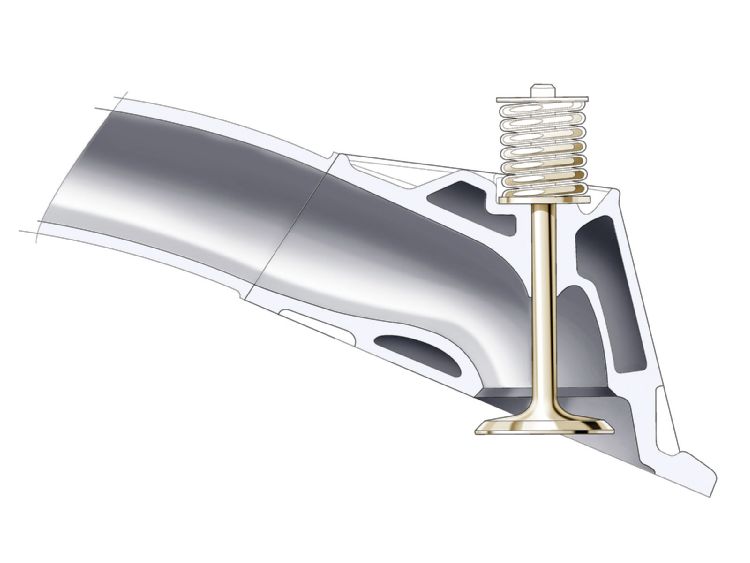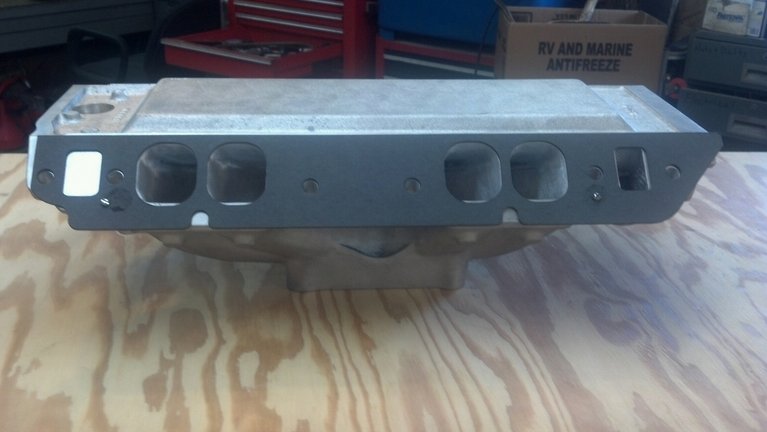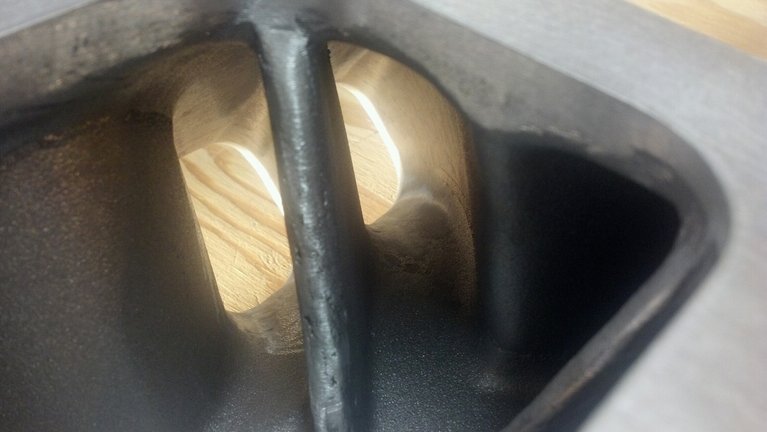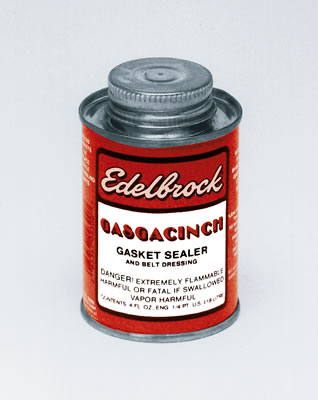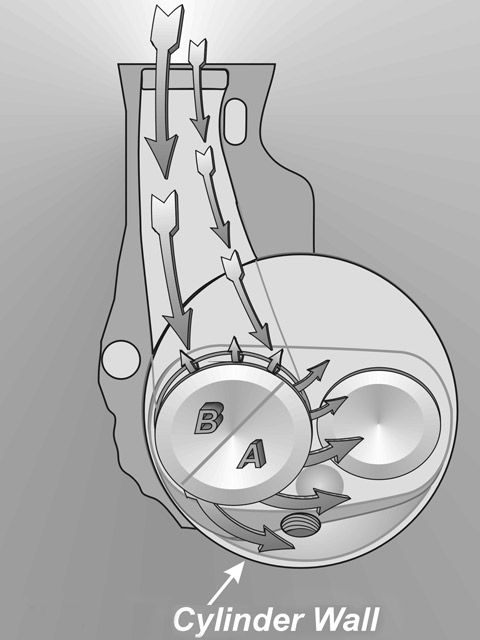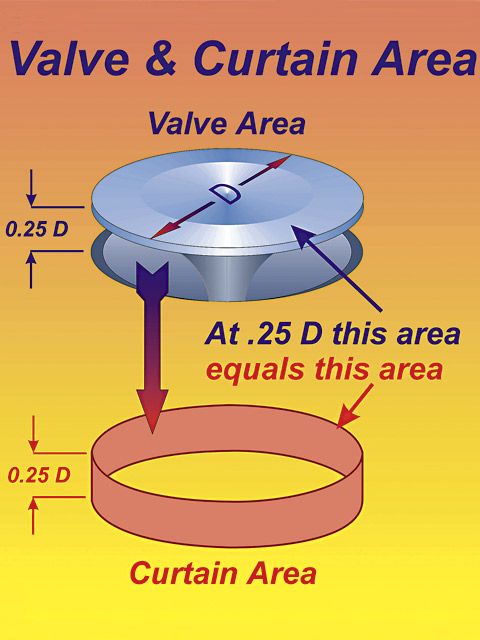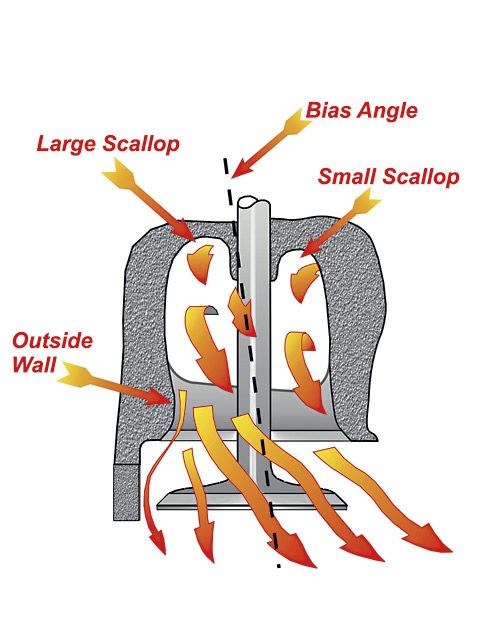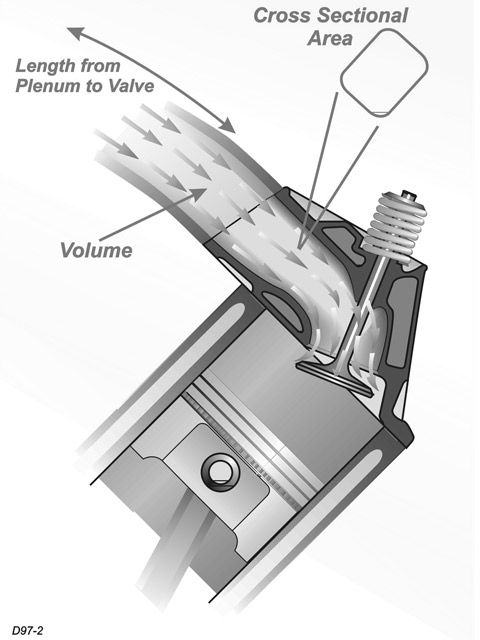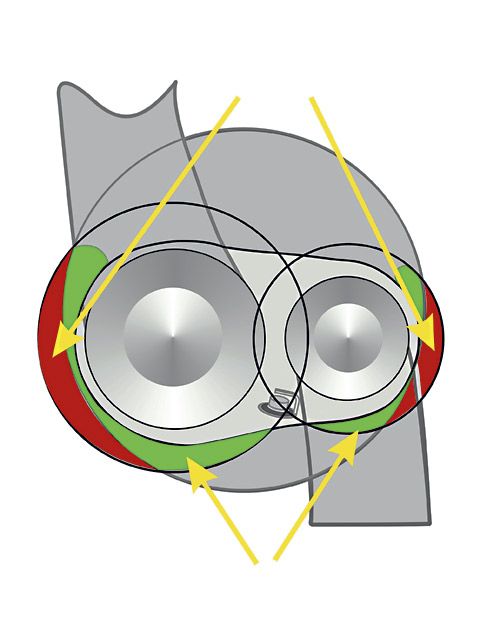first thought,
don,t be really overly concerned with what is effectively at most a minor factor in the engines performance, because ports are rarely opened up to the max intake gasket diameter and a minor miss alignment on the gasket of 1/32" or so has very little effect on flow rates.
but yes there is a few ways to center the hole in the gasket around the bolts holding the intake in place, you can buy one of these o-ring kits for $8, and slide the appropriate diam o-ring over the bolt, after inserting in the intake manifold bolt, the o-ring will center the bolt in the intake gasket as you tighten/clamp the intake as it is forced into the slightly larger hole in the gasket. this is not always 100% precise but its amazingly consistent provided you always use the exact same intake gasket part number on the cars engine
(provided of course that the intake gasket manufacturer keeps the intake gaskets consistent)
most intakes require gasket matching to maximize the flow potential
simply open the ports to match and transition too the heads and blend back any change in cross sectional area up the runners at least an inch or more
don,t forget the plenum and runner entrance needs smoothing
https://www.summitracing.com/parts/...Hci_rngCjPIi0Hzl27DmoGKgPl5jkEzRoCXYoQAvD_BwE
use of a gasket sealer that helps prevent gasket movement helps
OR YOU CAN
AND, its far more precise if buy a box of roll pins and carefully drill thru both the intake and head, a twin set of two 3/32" holes about a 1/3" deep, parallel to and just above the two outer intake bolt,s and place the roll pin in that hole drilled in the heads just above the two outer intake bolts about 1/4" higher on the heads , insert a roll pin so it sticks up ONLY about a 1/8", so it BARELY protrudes above the gasket surface so you can index the intake GASKET on the pins preventing it from shifting location after punching matched location holes in the gaskets, with the punch listed below
then go back and trial fit/ install the intake manifold after painting the tips of the roll pins with machinist bluing dye to precisely locate the place to drill the intake flange on the intake manifold and re-drill just the intake manifold flange hole that aligns with the roll pin to 1/8" diam. so its got a bit of movement as its dropped into place over the tip of the roll pins,
some guys drill the center of the front and rear block china wall and insert a roll pin and drill an alignment hole in the intake as well, there as doing so insures duplication of the intakes exact consistent repeat alignment as it lowered vertically onto the heads. once you've got the intake gasket located in a 100% repeatable location on the heads you can use the same alignment holes to hold the gasket on the intake manifold flange with tiny bolts and nut so you can spray the intake ports in the intake manifold with machinist blue to locate the exact area that needs to be matched.
yes if you want every thing 100% perfect it can be done, but, Id suggest you don,t be really overly concerned with what is effectively at most a minor factor in the engines performance, because ports are rarely opened up to the max intake gasket diameter and a minor miss alignment on the gasket of 1/32" or so has very little effect on flow rates.
http://www.harborfreight.com/315-piece- ... 67682.html
http://performanceolds307.tripod.com/id29.html
How to PORT MATCH a intake manifold to the heads. Port matching is a good idea, it assures the intake manifolds port runners match up perfectly to the intake ports on the heads. Heres the how too.
First use felpro intake gaskets for this job because they are the only ones I found to perfectly match up with the heads, but intake manifolds never match up so thats why we gotta port match them.
1. Take a old intake gasket turkey tray and install the intake (thats gonna be port matched) on the engine. Torque down to specs.
2. Remove the 4 intake bolts on the 4 edges of the intake.
3. Use a small drill bit and drill 4 small holes in the intake just over the holes of the 4 bolts you just removed (One per bolt hole of course). Drill through the intake and intake gasket, untill it just barely starts to go into the head. No need in going in the head, just go enough to make a mark on it. (Check pictures below)
4. After doing that to all 4 corners, remove the intake and gasket.
5. With the intake and gasket off the car. Now you can hold the gasket up to the intake and match the 4 holes you drilled though the intake and gasket.
6. With the intake gasket held on the intake and the 4 holes matched up, take a razor and scrub on the intakes flange around the outer edge of the intake gaskets ports (tracing the size, location and shape of the intake gaskets port onto the intake manifold). This will be used as a guide when your porting out the intake. Make sure to do that to all 8 intake ports
7. Now remove the gasket and start port matching. Start on the outer edge of the intakes port, bring the port size to about 0.5mm away from the mark you scrubed on it with the razor (becuase its always better to undercut then overcut).
8. After getting the ports opening to the size and shape of the scrubed mark then proceed to slow taper the opening of the ports inward into the intake. You should only take it in about 3 inches if your just port matching the intake. By 3 inches it should be tapered to match the original surface in such a smooth manner that you cant tell were you tapered it at. If its a full port job then use this size and shape as a guide all the way in if possible.
9. When your all done, take the new intake gasket and drill 4 holes in it in the same exact location as the old intake gasket used for the porting. Just hold the two gaskets over eachother to get the perfect location to drill.
10. After drilling the 4 holes place the new gasket on the engine and press in the gaskets locating pins so the gasket is perfectly in place.
11. Varify the 4 holes drilled in the intake gasket matches the 4 holes drilled in the heads. It does! Good!
12. Install the intake and new intake gasket with normal torque technics but keep a close eye on all the 4 holes, making sure the intake is falling back into its original position along with the intake gasket.
13. When your all done you should be able to look into every hole you drilled and see through the intake, intake gasket and right onto the head. At this point you can be sure that it is all "port matched"
http://www.harborfreight.com/382-piece- ... 67554.html
viewtopic.php?f=55&t=5378&p=16106&hilit=port+match#p16106
viewtopic.php?f=52&t=2971&p=7799&hilit=gasket+match#p7799
viewtopic.php?f=55&t=2773&p=7200&hilit=+port+match#p7200
IF YOU GO THE ROLL PIN ROUTE BUY ONE OF THESE IT MAKES PUNCHING THE INTAKE GASKET HOLES FAR EASIER
http://www.harborfreight.com/leather-pu ... 97715.html
typical vortec head ports before being matched to gaskets
aluminum small vortec style aftermarket port heads before port match
aluminum small vortec style aftermarket port heads after port match
its not at all unusually to gain significant flow increases if the ports and intake are matched, but its not always a huge increase in every case, a good deal depends on the components used and the cam selected, theres not much gained if the potential port flow has increased lets say 40% at .700 lift if the cam and intake being used reduce flow and valve lift to well below those potential flow rates.
Ive ported killer sbc heads ,and then tested them before and after on a freinds flow bench, heads that flowed 280cfm out of the box too flow 316 cfm at .700 lift after port clean up work,and once you install an intake on hose same heads, and set the valves at .500 lift like the cam being used in the build you find you have 257 cfm of flow
USE THE CALCULATORS to match port size to intended rpm levels... but keep in mind valve lift and port flow limitations[/color]
http://www.wallaceracing.com/runnertorquecalc.php
http://www.wallaceracing.com/ca-calc.php
http://www.wallaceracing.com/area-under-curve.php
http://www.wallaceracing.com/chokepoint.php
http://www.wallaceracing.com/header_length.php


